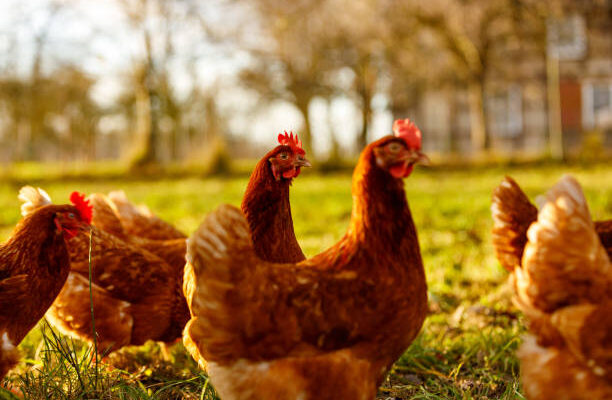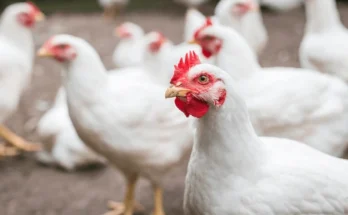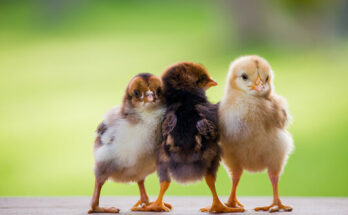Can Chickens See In The Dark?
Can chickens see in the dark? Understanding the visual capabilities of our feathered friends is essential for their well-being and safety, especially for chicken owners, farmers, and beginners to owning chickens. In this blog post, we will explore the fascinating world of chicken vision and shed light on how they navigate in low-light conditions. Whether you’re a seasoned poultry farmer or a novice in the realm of chicken keeping, this knowledge will undoubtedly prove valuable in caring for your flock. Let’s delve into the unique visual abilities of chickens and uncover the secrets of their nocturnal vision.
Anatomy of a Chicken’s Eye

The anatomy of a chicken’s eye is fascinating and plays a crucial role in their ability to see in various light conditions. Understanding the structure of a chicken’s eye provides valuable insights into their visual capabilities, especially in low-light environments.
Rod and Cone Cells
In a chicken’s eye, similar to human eyes, there are specialized cells known as rod and cone cells. These cells are essential for detecting light and color. In low-light conditions, such as at dusk or dawn, the rod cells become particularly important as they are highly sensitive to light. They enable chickens to have some level of vision in dimly lit surroundings.
Tapetum Lucidum
One remarkable feature of a chicken’s eye is the presence of a tapetum lucidum, a reflective layer behind the retina. This structure acts like a mirror, reflecting light that has not been absorbed by the photoreceptor cells back through the retina. The tapetum lucidum effectively gives the photoreceptor cells a second chance to pick up and process the light, thus enhancing the chicken’s vision in low light conditions. This unique adaptation allows chickens to make the most of whatever light is available, contributing to their ability to navigate and forage during periods of reduced visibility.
In conclusion, the intricate design of a chicken’s eye, with its specialized rod and cone cells, alongside the presence of the tapetum lucidum, equips them with the ability to perceive their surroundings even in low-light settings. This adaptation sheds light on the remarkable visual capabilities of chickens and how they are adept at thriving in diverse environmental conditions.
Can Chickens See in the Dark?
Chickens possess remarkable nocturnal vision abilities, allowing them to navigate and forage for food in low-light conditions. Scientific studies and extensive observations of chicken behavior have revealed that they can perceive a wide range of light levels, including those present during dawn, dusk, and moonlit nights.
So, can chickens see in the dark? the simple answer is yes.
Nocturnal Vision Abilities
Chickens’ eyes are designed to be highly sensitive to light, with a high concentration of rod cells in their retinas. These specialized cells enable them to detect even small amounts of light, giving them the ability to see in dim environments. Additionally, chickens have a reflective layer behind their retinas, called the tapetum lucidum, which enhances their vision in low-light conditions by reflecting light that has passed through the retina back into the eyes, effectively giving them a “second chance” to detect the light.
Limitations in Complete Darkness
Despite their impressive nocturnal vision capabilities, chickens do have limitations in complete darkness. In situations where there is an absence of any ambient light, such as in enclosed spaces with no windows or minimal artificial lighting, chickens may struggle to see clearly. Their vision becomes severely compromised, and they may rely more on their other acute senses, such as hearing, to navigate their surroundings.
Chickens’ ability to see in the dark is a valuable evolutionary adaptation that aids in their survival and ability to thrive in a variety of lighting conditions, making it an intriguing aspect of their unique biology.
By understanding the nocturnal vision abilities and limitations of chickens, chicken owners, farmers, and smallholding owners can better cater to their birds’ environmental needs, ensuring their welfare and optimal functioning within their habitats.
Practical Implications for Chicken Owners
Understanding how chickens see in the dark can have practical implications for chicken owners, influencing various aspects of chicken husbandry to ensure the well-being and safety of their flock during nighttime hours. Let’s delve into the practical implications of chickens’ night vision for chicken owners.
Coop and Roost Design
When considering chickens’ ability to see in low light conditions, it’s essential to factor this into the design of coops and roosts. Chickens rely on their vision to navigate their surroundings and identify potential threats even in the dark. Therefore, ensuring that the coop and roost are designed with this in mind can significantly impact the comfort and safety of the chickens at night.
Incorporating features such as low-level lighting or utilizing reflective materials in the coop can aid chickens in orienting themselves and feeling more secure during nocturnal hours. Additionally, understanding how chickens perceive light and shadow can guide the placement of perches and roosts, ensuring they are easily accessible and visible to the chickens in low light conditions.
Predator Awareness
A key practical implication of understanding chickens’ vision in the dark is the enhanced ability to bolster predator awareness and protection during nighttime. By recognizing that chickens may have limited visibility in low light, owners can implement additional security measures such as reinforced fencing, predator-proof latches, and motion-activated lighting to deter nocturnal predators.
Moreover, being aware of potential blind spots or obscured areas within the chicken’s surroundings allows owners to strategically position deterrents or surveillance equipment to mitigate the risk of predator attacks during nighttime hours, ultimately safeguarding the flock.
Lighting Considerations
Guidance on appropriate lighting setups within chicken coops is vital for supporting chickens’ visual needs during low-light periods. While chickens possess some ability to see in the dark due to their unique eye anatomy, providing supplementary lighting can aid them in navigating the coop and identifying food and water sources during the night.
Utilizing soft, ambient lighting sources such as red or blue wavelength lights can help maintain the chickens’ sense of security while providing adequate illumination for basic activities. It’s crucial to strike a balance between providing sufficient light for the chickens’ comfort and avoiding harsh, disruptive lighting that may cause distress or disrupt their natural sleeping patterns.
In conclusion, by integrating the understanding of chickens’ night vision into the design and management of their living spaces, chicken owners and farmers can optimize the well-being and safety of their flock during nighttime hours, fostering a conducive environment for their chickens to thrive.
Remember, chickens rely on their vision to navigate their surroundings and identify potential threats even in the dark. Therefore, it’s crucial to factor this into the design of coops and roosts, bolster predator awareness and protection during nighttime, and provide appropriate lighting setups within chicken coops to support chickens’ visual needs during low-light periods.
Conclusion
In conclusion, understanding the vision of chickens in low-light conditions is crucial for chicken owners, farmers, and beginners in poultry care. As we’ve explored, chickens have superior night vision compared to humans, thanks to their specialized eyes containing a high percentage of rod cells. This enables them to navigate and forage in dim light, highlighting the significance of providing adequate nighttime housing and ensuring safety from nocturnal predators. Additionally, comprehending their visual capabilities can aid in creating optimal living conditions and minimizing stress for these birds, ultimately contributing to their overall well-being and productivity. By acknowledging and adapting to their unique visual abilities, chicken owners and farmers can enhance the welfare and management of their flocks, ultimately leading to healthier and more contented chickens. We have a full guide here on chicken welfare which every beginner poultry owner should familiarise themselves with.



